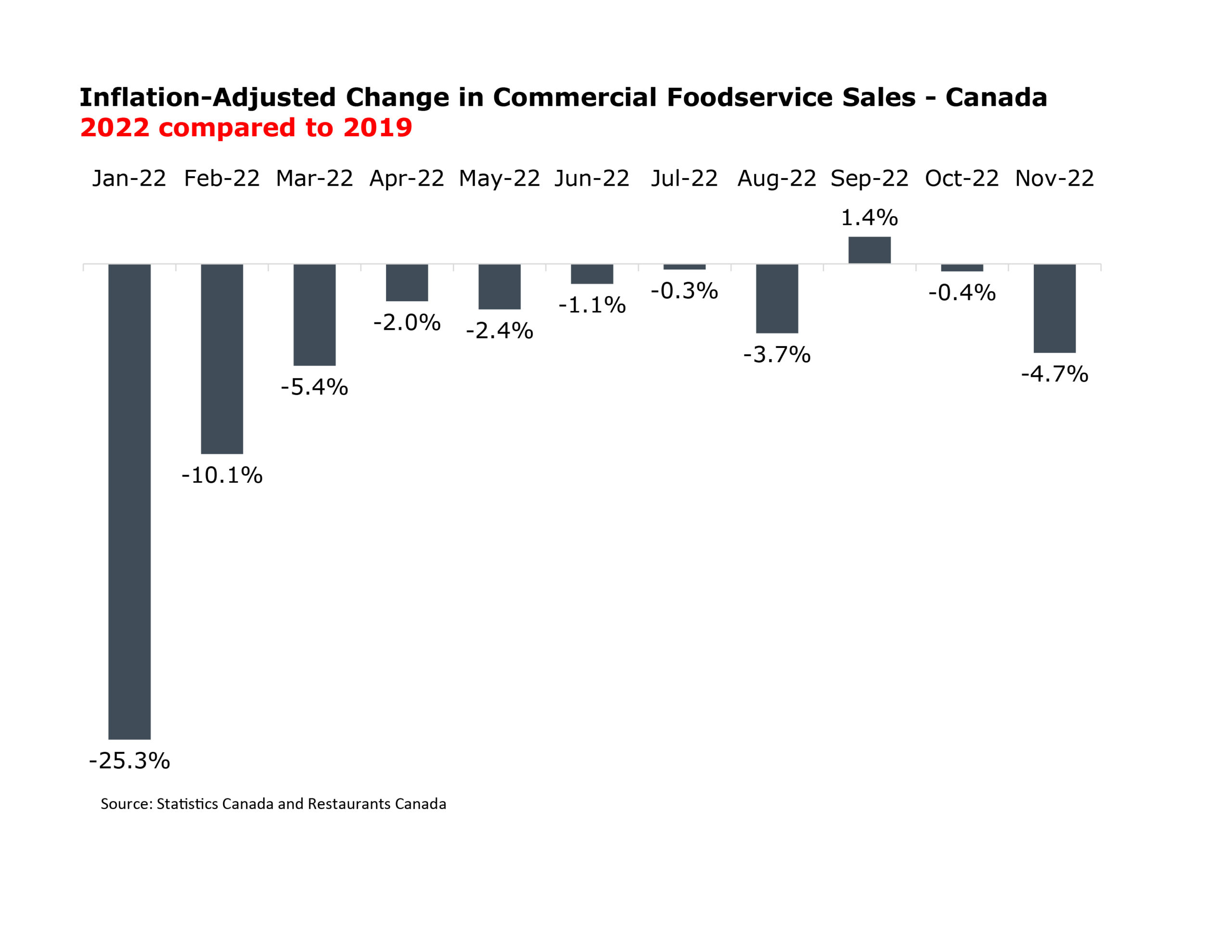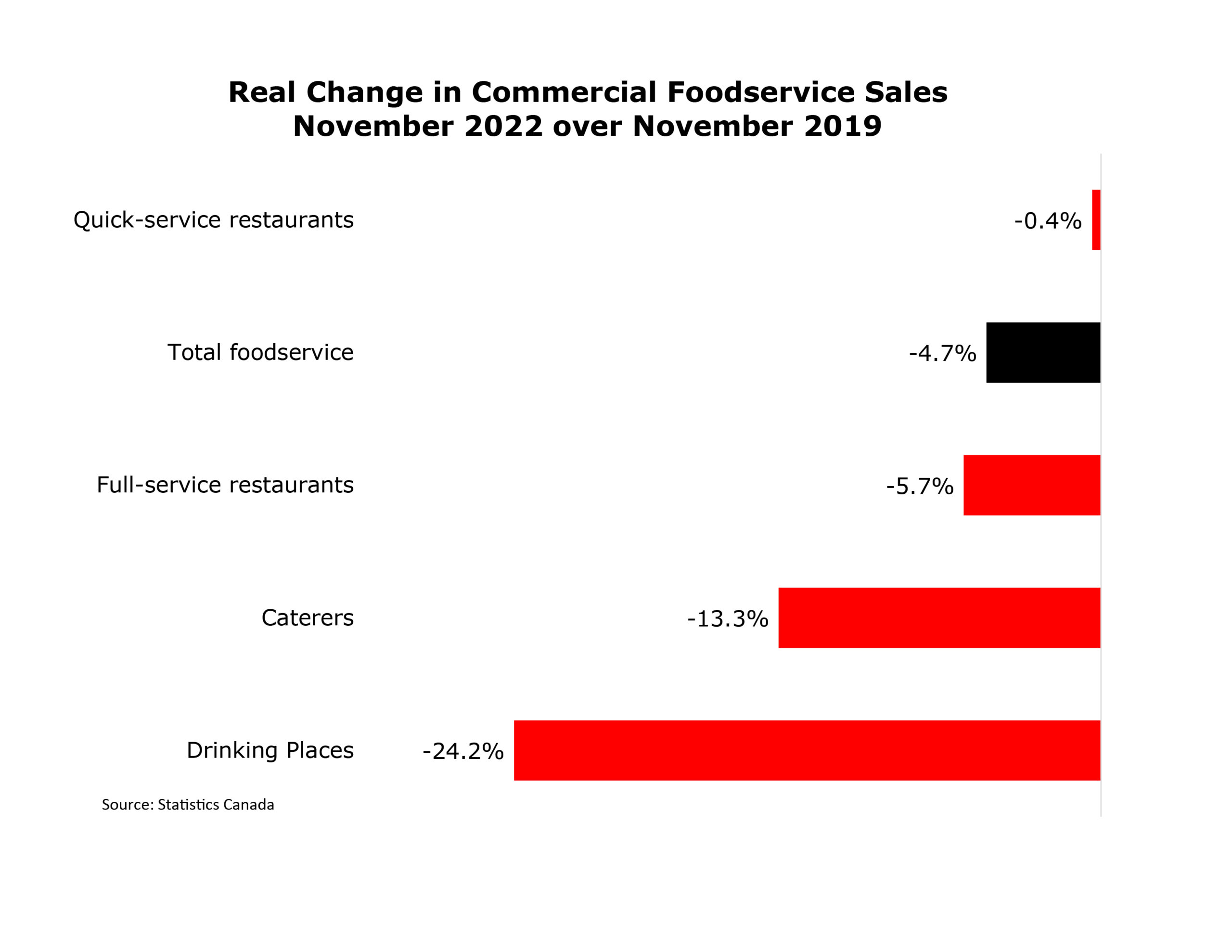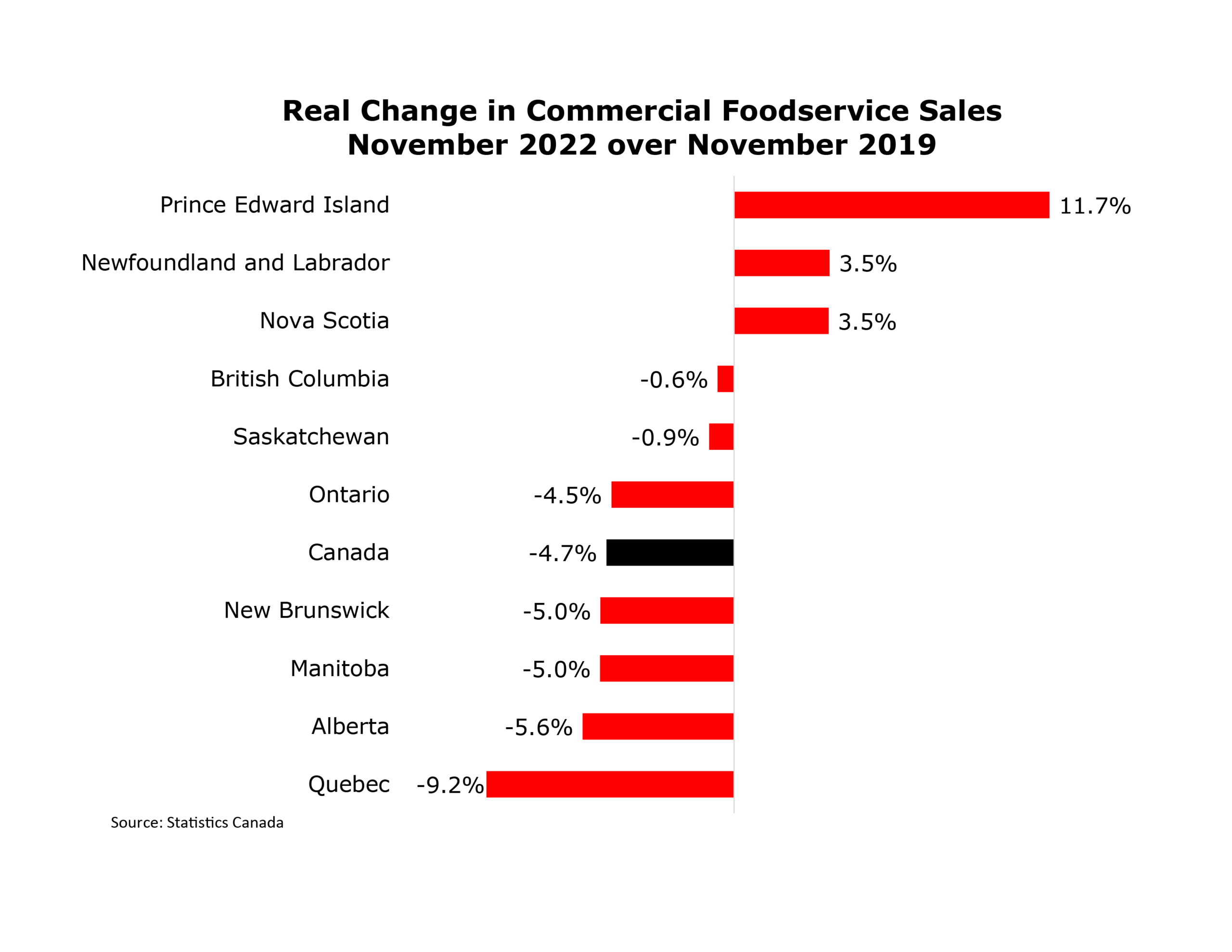Real Foodservice Sales Drop in November 2022

Taking into account menu inflation, November 2022 real commercial foodservice sales were 4.7% lower across Canada compared to the same period in 2019, representing the most significant monthly decline in foodservice spending since March 2022.

As reported through Statistics Canada data, this sharp loss in momentum was first identified in Restaurants Canada’s November 2022 REACT Survey. The share of Canadians who purchased dinner from a restaurant once a week or more fell to 26% in November 2022, a noticeable decrease in traffic after consistently averaging 33% over the previous eight months. While the decline in dinner purchase frequency was evident across all income levels, respondents with a household income of $100,000 or more saw the greatest drop in share, falling from 41% in October 2022 to 31% in November 2022.
Statistics Canada’s release of November 2022 data provided a clear understanding of how much consumers pulled back on their foodservice spending. Real sales at full-service restaurants fell by 5.7% in November 2022 versus November 2019, down from a 0.4% real increase in October 2022. Similarly, real spending at QSRs (quick-service restaurants) slipped by 0.4% in November 2022, following a slight 1.9% increase in October 2022. Meanwhile, caterers and drinking places experienced significant double-digit declines in November 2022 compared to November 2019.

Provincially, Prince Edward Island continued to lead the country, with real sales 11.7% higher in November 2022 compared to November 2019. In contrast, Quebec and Alberta saw the most extensive real declines, down 9.2% and 5.6%, respectively.
In Quebec, the sharp decline in real sales appears to correspond to rising menu prices, with a menu inflation increase of 9.6% in November 2022, the highest in the country. This trend continued into December 2022, increasing to 10% compared to the provincial menu inflation average of 7.7%. A newly released report by Angus Reid found “more than half (56%) of Québécois report that prices at traditional dine-in restaurants have increased a great deal over the past year, compared to just 38% in the rest of Canada. Québécois are also most likely to note a significant increase in QSRs prices (31%, versus 24% in the rest of Canada).”
While inflation in Alberta remains lower than the national average – at 6.8% in November- the 5.6% decline in sales is due mainly to growing concerns about household finances. According to Leger’s 2023 Canadian Economic Confidence Report, Albertans’ have the highest share of households worried about the value of investments, being able to pay their bills and having to carry a balance on their credit card.

For the latest foodservice sales data, click here.


